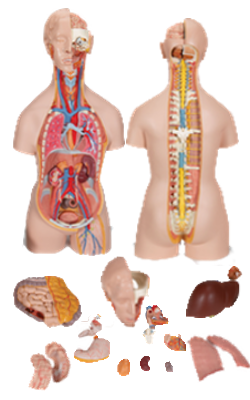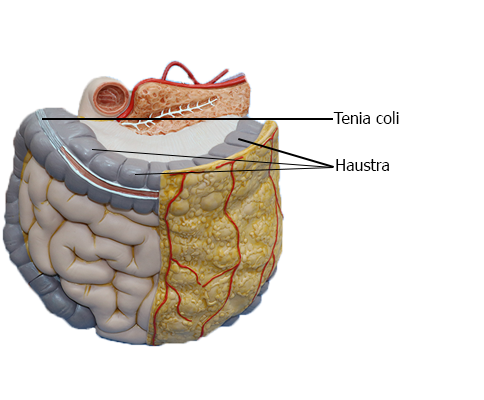Main Model

LARGE INTESTINE : Teniae coli and haustra

Large Intestine
The large intestine is where water is absorbed from the indigestible residues of the liquid chyme, converting it into semisolid stool or feces that is stored temporarily and allowed to accumulate until defecation occurs. The large intestine consists of the cecum; appendix; ascending, transverse, descending, and sigmoid colon; rectum; and anal canal. The
large intestine can be distinguished from the small intestine by:
• Omental appendices: small, fatty, omentum-like projections.
• Teniae coli: three distinct longitudinal bands: (1) mesocolic tenia, to which the transverse and sigmoid mesocolons attach; (2) omental tenia, to which the omental
appendices attach; and (3) free tenia (Latin t. libera), to which
neither mesocolons nor omental appendices are attached.
• Haustra: sacculations of the wall of the colon between
the teniae.
• A much greater caliber (internal diameter).
The teniae coli (thickened bands of smooth muscle representing most of the longitudinal coat) begin at the base of
the appendix as the thick longitudinal layer of the appendix
separates into three bands. The teniae run the length of the
large intestine, abruptly broadening and merging with each
other again at the rectosigmoid junction into a continuous longitudinal layer around the rectum. Because their tonic
contraction shortens the part of the wall with which they are associated, the colon becomes sacculated or "baggy" between
the teniae, forming the haustra.